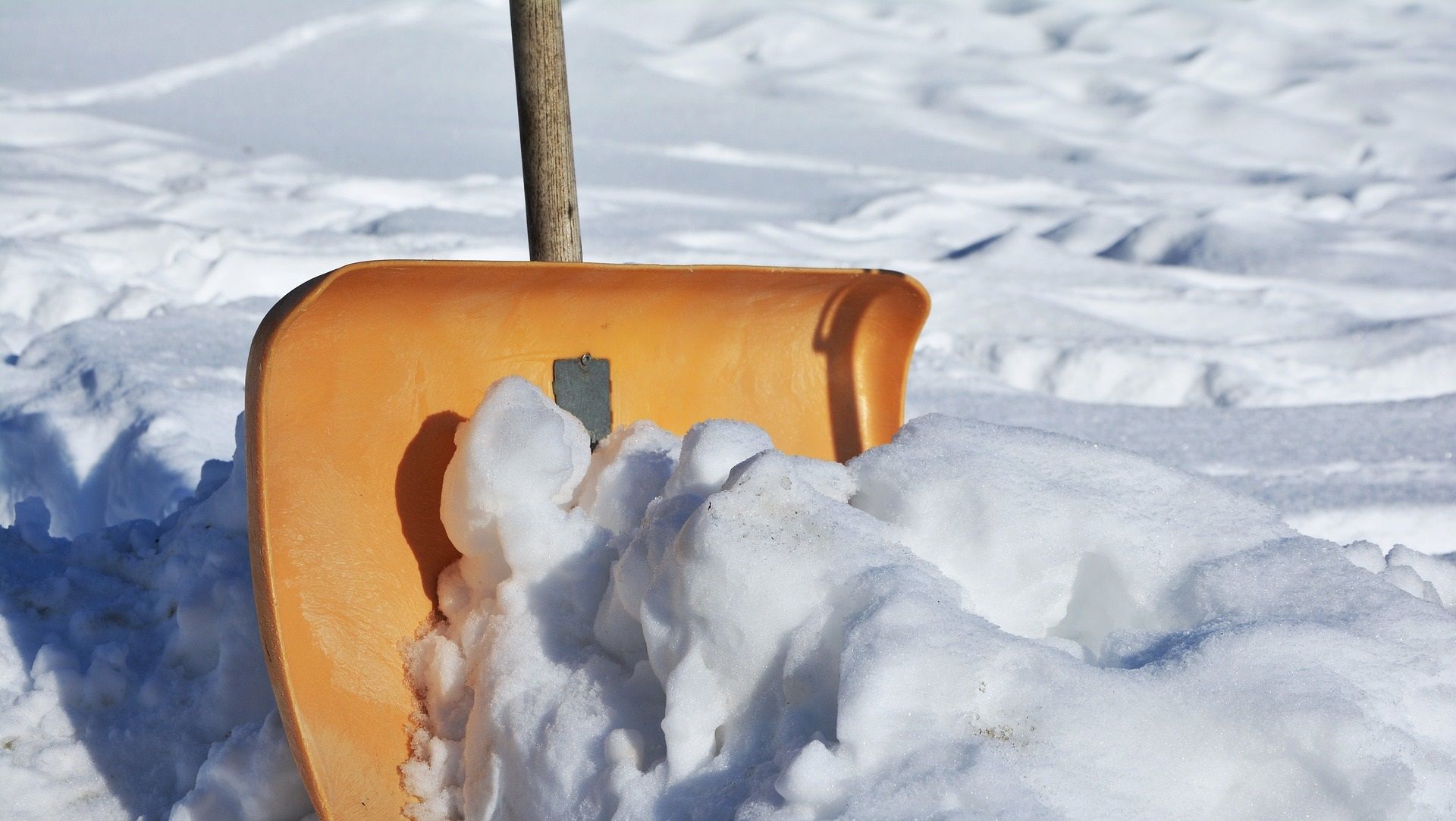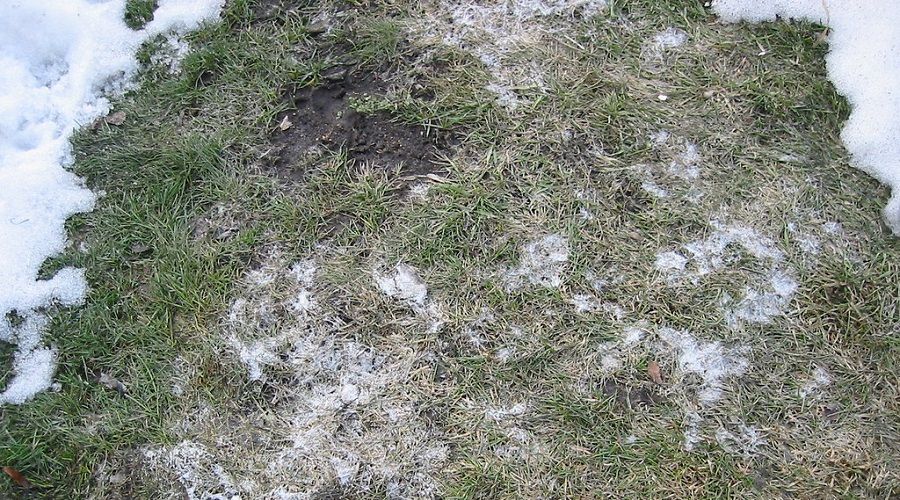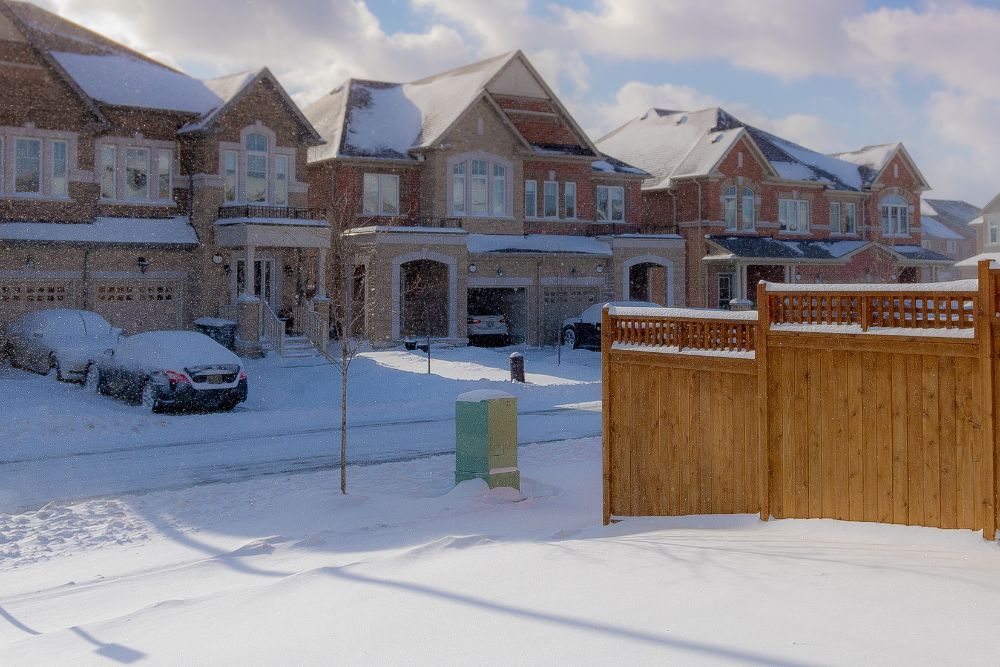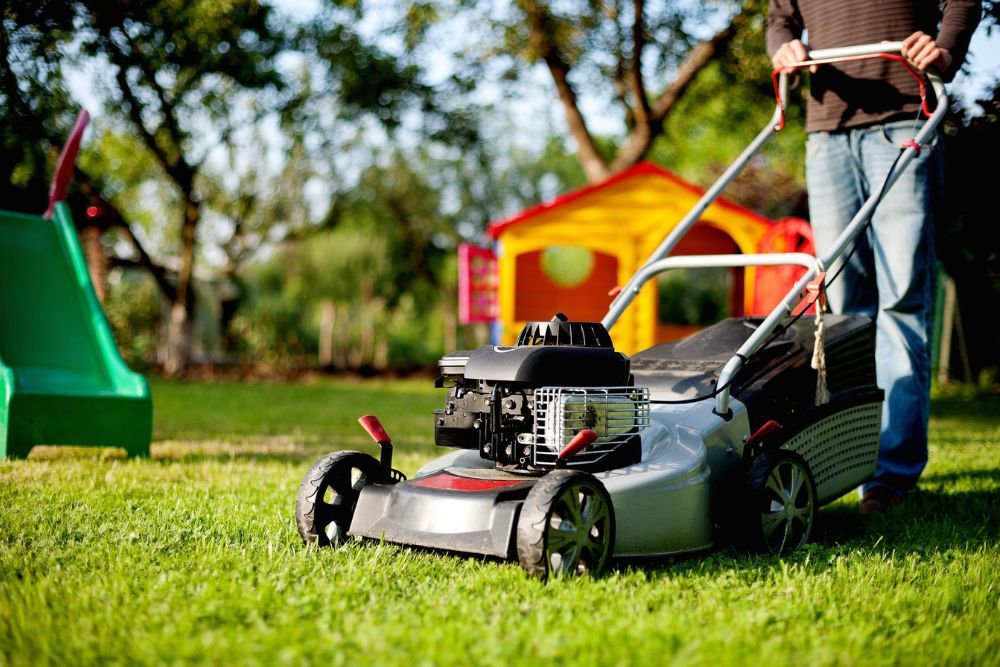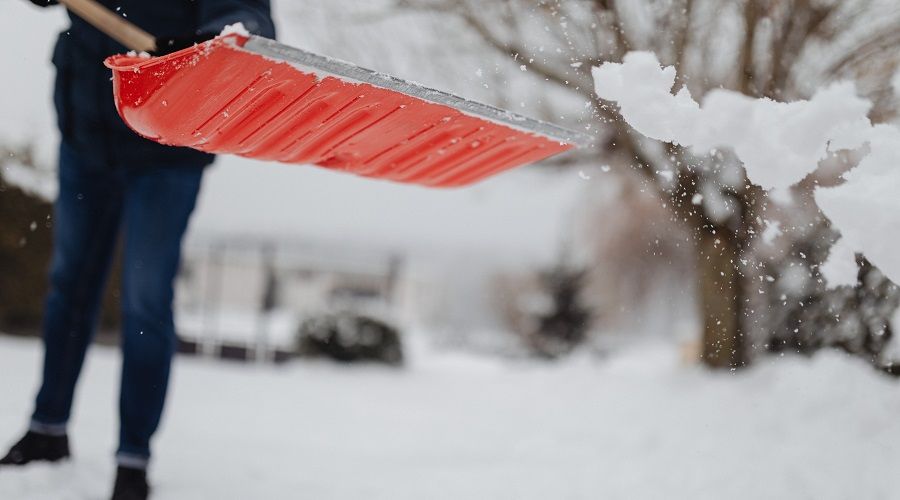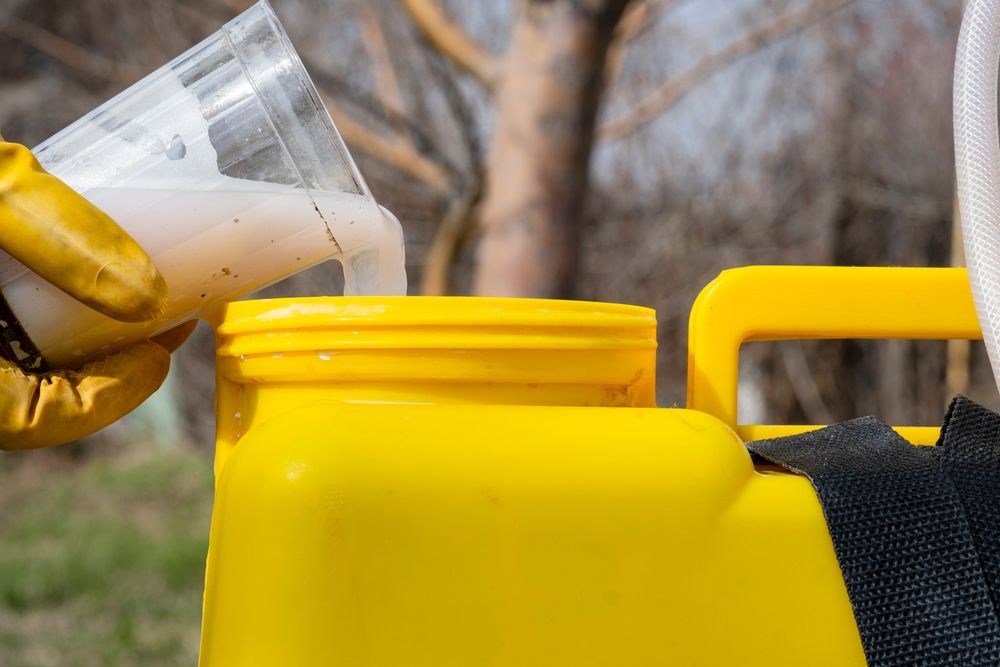Snow mold is every gardener's nightmare! No one wants their beautifully manicured, vibrant green lawn to get moldy patches over winter. This mold can leave patches on your lawn as big as three feet across! What's worse, you might not know your lawn is suffering from this mold until the snow melts in the spring.
The good news is that you're several steps away from preventing snow mold from forming on your lawn and learning to care for it over winter. First, check out the list of essential snow mold prevention materials below. Then, keep reading for step-by-step details on how to look after your lawn during the coldest months of the year!
List of Materials
Image credits: congerdesign via Pixabay
To prevent snow mold, there are things you'll need to gather to get the project started. You probably have all these things at home already.
What Type of Snow Mold Does Your Lawn Have?
Image credits: noricum Creative Commons
Tpyhula Blight
Typhula blight can be distinguished by its gray-white mycelium or its root structure. You will see the mycelium spread throughout the gray patches when your snow melts in spring.
Two types of fungus cause typhula blight, typhula incarnata (T. incarnata) and typhula ishikariensis (T. ishikariensis). These are sometimes also called snow mold because their mycelium, the vegetative part of the fungus, looks very similar during the spring thaw.
The mycelium of T. incarnata leaves copper-colored sclerotia, the body of the fungus, as wide as the blade of grass, while T. ishikariensis produces smaller black sclerotia. You can see these sclerotia on each blade of infected grass. They resemble small copper or black circles.
Cottony Snow Mold
Another possibility is cottony snow mold or coprinus snow mold. This type of mold is named for the cottony-looking mycelium it leaves behind. When the snow melts you will see white wooly patches on your lawn. This type grows best when snow covers your lawn and it is 40 to 60 degrees Fahrenheit.
Snow Scald
A less common mold that can also infect your lawn is snow scald or myriosclerotinia borealis. This is a particular problem in turfgrasses. The mycelium of this type of mold is gray and it will leave tan-colored sclerotia on the grass blades. You can differentiate this from typhula blight by the size of its patches. Snow scald patches are typically six inches, while typhula blight leaves patches as big as three feet.
Pink Snow Mold
Pink snow mold or michrodochium patch is easy to spot because it has a pink mycelium. Whereas other varieties have white or gray mycelium, pink snow mold is pink! This type of mold can actually grow year-round. This mold turns pink when it is exposed to sunlight. This year-round mold might appear in combination with other snow molds.
How to Prevent Snow Mold on Your Lawn
Step One: Find out if Your Lawn is at Risk
Image credits: Anon via Pexels
The first step in preventing snow mold is determining if your lawn is at risk. Snow mold doesn't occur everywhere! So what lawns are at risk of developing this nuisance? The primary factor that causes snow mold is snow but, a few flurries should not cause any worry.
Your lawn is at risk if snow covers it for 60 days or more. Then, this risk jumps even higher if the ground is still warm, around 30 to 35 degrees Fahrenheit. Together, warm temperatures and a blanket of snow trap moisture in the grass. This creates the perfect environment for snow mold or typhula blight.
Step Two: Don't Fertilize With Nitrogen in Autumn
Image credits: VisualArtStudio via Shutterstock
One thing that snow mold loves is a high-nitrogen environment. So to prevent it, keep a close eye on the weather forecast if you plan to fertilize.
Don't fertilize your lawn with nitrogen if you know that cold weather is on its way. If you see snow in the forecast or temperatures are getting close to freezing, skip fertilizing your lawn.
Have you already had the first frost of the season? Then hold off on fertilizing with nitrogen until spring. Simply skipping nitrogen fertilizer will remove a key growth factor for snow mold.
Step Three: Mow Your Lawn
Image credits: Andreas160578 via Pixabay
Snow mold grows well in high lawns. If your lawn is growing, this step is as easy as taking out your lawn mower or riding lawn mower and trimming it. Frequent mowing at the medium or low setting on your lawn mower will prevent the grass from becoming matted and mold from forming. These settings usually keep your lawn two inches or shorter.
Then, how late in the season you should mow depends on the temperatures that year. A general rule of thumb is that if it is warm enough for your grass to continue growing, then you can still mow it. This could be as late as November or December in some regions. Once the frost arrives, then you can put the lawn mower away for the season.
Step Four: Rake up Your Leaves
Image credits: Polesie Toys via Pexels
Tall lawn canopies aren't the only thing that can trap moisture in your lawn, leaves can too. So, if your grass is covered with an exceptional amount of leaves in autumn, rake them up.
A few scattered leaves aren't likely to cause any mold damage. Air will keep circulating if there are just a couple of leaves on your lawn in winter. However, if leaves are rapidly accumulating over your lawn like a blanket, this can seal in moisture and increase your risk of mold.
Step Five: Improve Drainage in Your Yard
Image credits: Karolina Grabowska via Pexels
This step is most crucial when temperatures warm up during spring or even in winter if there is a thaw. Snow mold favors wet damp environments. Improving drainage in your yard ensures that water from melting snow can evaporate rather than stay trapped in the grass.
While you can aerate your lawn to improve drainage, one of the largest factors in mold growth is snow buildup. So improving drainage can be as simple as grabbing your snow shovel. When temperatures warm up, shovel snow, and chop any thick sheets of ice on your lawn. It will help the sun to melt and dry your lawn faster. The more air that can get at your grass after an accumulation of snow, the better.
Step Six: Use a Fungicide
Image credits: PromKaz via Shutterstock
Finally, it's time for fungicides if natural prevention options aren't cutting it. Apply the fungicide to your lawn in autumn while your grass is still growing. It will give your turf time to absorb before the winter arrives and the ground freezes completely.
Depending on the products available in your area, one application of fungicide can protect your lawn for the entire winter. You will need to dilute it with water at a ratio of about two to three gallons per one thousand square feet. This will sufficiently cover your lawn and provide protection.
Some popular varieties of fungicides include, fenarimol, triadimefon, and propiconazole. Keep in mind that these are most effective in the eastern states.
Alternatively, you may need a combination of different fungicides including dicarboximides and chlorothalonil. The combination may change yearly depending on the strains that are most prevalent.
Have You Conquered Snow Mold?
Snow mold is highly detrimental to your lawn, so don't become a victim. When these mold spores grow underneath blankets of snow they could kill off sections of your lawn.
Keep your lawn healthy this winter. Skip the nitrogen fertilizer and stay on top of raking up your leaves. Closer to spring or if temperatures rise, improve drainage by shoveling and breaking up sheets of ice. Then if all else fails, apply a fungicide! This will protect your lawn all winter long!
Each step you take now will help to prevent snow mold from growing this winter. Say goodbye to unsightly grey patches on your prized lawn.
Have you ever had snow mold attack your lawn? Which prevention methods worked best for you? Pop a comment down below, then don't forget to share these tips with family and friends.


